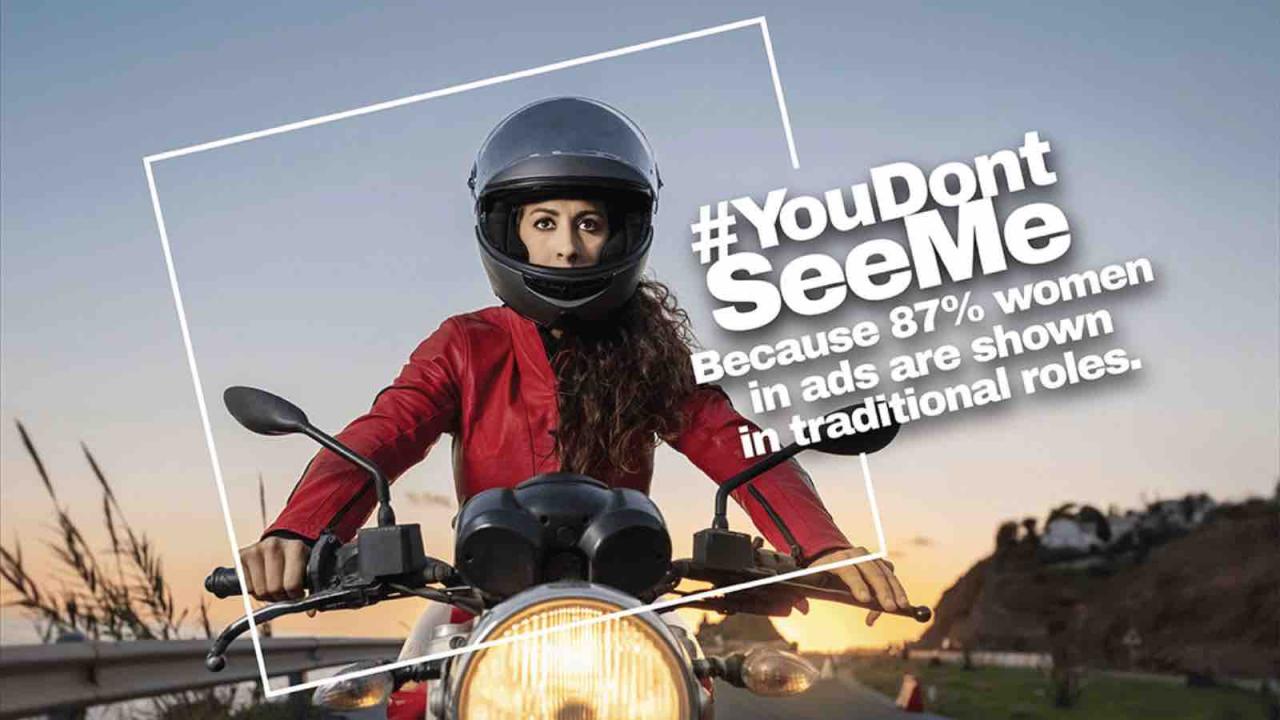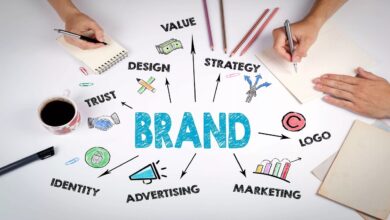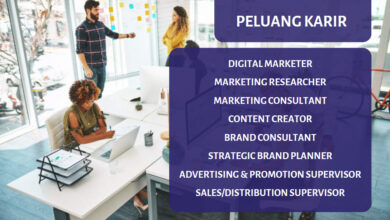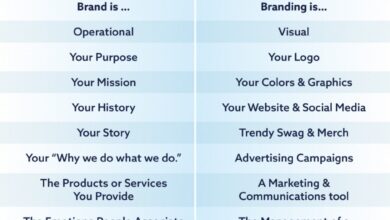
5 Marketing Ads That Crushed Gender Stereotypes
5 Marketing Ads That Crushed Gender Stereotypes – that’s what we’re diving into today! Tired of the same old tired tropes in advertising? So am I. This post explores five campaigns that bravely bucked tradition, showcasing fresh, inclusive, and downright brilliant approaches to marketing. Get ready to be inspired by ads that not only sold products but also shifted cultural perceptions.
We’ll be looking at the specific techniques used – from clever humor to powerful emotional appeals – and examining how these ads resonated with audiences. We’ll also analyze the visual elements and discuss the lasting impact these campaigns have had on both the advertising world and society at large. Buckle up, it’s going to be a fascinating ride!
Identifying Groundbreaking Ads
Marketing campaigns often reflect and reinforce societal norms, but some have bravely challenged ingrained gender stereotypes, paving the way for more inclusive and representative advertising. These ads didn’t just sell products; they sparked conversations and shifted perceptions. Analyzing these campaigns reveals valuable insights into how brands can effectively promote positive social change while achieving marketing goals.
Examples of Ads Challenging Gender Stereotypes
Below is a table highlighting five advertisements that successfully defied traditional gender roles. The selection represents a range of products and approaches, illustrating the diverse ways in which brands can challenge societal expectations. Note that the impact of these ads is subjective and open to interpretation, but their innovative approaches are undeniable.
| Brand | Product | Year | Description of Stereotype-Breaking Elements |
|---|---|---|---|
| Dove | Dove Real Beauty Sketches | 2013 | This campaign challenged unrealistic beauty standards by showcasing the discrepancy between how women perceive themselves and how others see them. It used forensic artists to illustrate how perceptions are skewed by societal pressures and media portrayals, promoting body positivity and self-acceptance. The ad directly addressed the negative impact of unrealistic beauty standards on women’s self-esteem. |
| Always | #LikeAGirl | 2014 | This campaign tackled the negative connotation associated with the phrase “like a girl.” By showcasing young girls and women performing athletic activities with confidence and power, Always redefined the phrase and challenged the sexist notion that it implies weakness or inferiority. The emotional impact of the video resonated deeply with viewers. |
| Nike | “Dream Crazier” | 2019 | This ad celebrated female athletes and their achievements, challenging the underrepresentation of women in sports and the perception that women are less capable than men in athletic pursuits. It featured a montage of powerful female athletes, highlighting their determination and skill. The message directly confronted the societal limitations placed upon women in the sports world. |
| Pantene | “Labels Against Women” | 2015 | This campaign focused on the negative impact of gendered labels and expectations on women’s careers and self-perception. It showcased women who had faced discrimination due to societal expectations and emphasized the importance of breaking free from these limitations. The ad featured strong female voices sharing their experiences, making it relatable and impactful. |
| Secret | “All Strength, All Woman” | 2020 | This campaign challenged the idea that strength is solely a masculine trait. It featured women from diverse backgrounds, showcasing their strength and resilience in various aspects of their lives. The ad avoided traditional depictions of femininity and instead emphasized the multifaceted nature of female strength. The use of diverse representation was a key element of its success. |
Analyzing Advertising Techniques
Source: petapixel.com
These five groundbreaking advertisements, defying traditional gender stereotypes, employed diverse and effective advertising techniques to reach their target audiences and deliver powerful messages. Analyzing these strategies reveals valuable insights into successful campaigns that challenge societal norms and promote inclusivity. A closer look at their approaches, including target audience identification, messaging strategies, visual elements, and media channel selection, illuminates the nuances of their impact.
Each advertisement cleverly tailored its approach to resonate with its specific target demographic. For instance, one campaign might focus on a younger audience using social media platforms and vibrant, playful visuals, while another might target a more mature audience through print media and a more sophisticated, emotionally resonant message. The skillful integration of these elements demonstrates a deep understanding of the target audience and their media consumption habits.
This understanding is crucial for maximizing the impact of the message and ensuring it reaches the intended recipients effectively.
Target Audience Segmentation and Messaging Strategies
The ads demonstrated a sophisticated understanding of target audience segmentation. One campaign, featuring a stay-at-home dad joyfully engaging in childcare, directly targeted the demographic of women who might feel societal pressure to be the primary caregiver. The messaging, through heartwarming visuals and a positive portrayal of a non-traditional family structure, aimed to challenge expectations and promote a more inclusive view of family roles.
Another campaign, showcasing a diverse group of women in various professional roles, resonated with a younger female audience, promoting self-confidence and challenging limiting beliefs about career paths. The message was clear: women can achieve anything they set their minds to, regardless of societal expectations.
Visual Elements and Media Channel Selection
Visuals played a crucial role in conveying the ads’ messages. Bold, vibrant colors and dynamic imagery were often employed to capture attention and create a memorable experience, particularly in ads targeting younger audiences. Conversely, ads targeting older demographics often utilized more subtle, emotionally evocative imagery to resonate with their sensibilities. The choice of media channels was equally strategic.
Social media platforms like Instagram and TikTok were favored for reaching younger audiences, while print media and television advertisements were used to reach broader demographics. The strategic use of multiple channels ensured maximum reach and impact.
Comparison of Advertising Approaches
While each advertisement employed unique techniques, several common threads emerged. All five ads effectively utilized emotional appeals, often leveraging heartwarming moments or powerful imagery to connect with viewers on a deeper level. Humor was also a frequently employed technique, particularly in ads aiming to challenge stereotypes in a lighthearted and engaging way. Social commentary was woven into the fabric of many of the campaigns, subtly or explicitly challenging societal norms and promoting inclusivity.
However, the degree to which each element was emphasized varied depending on the specific target audience and campaign goals. Some ads focused more heavily on emotional appeals, while others relied more on humor or social commentary.
Key Advertising Techniques Employed, 5 marketing ads that crushed gender stereotypes
The success of these campaigns can be attributed to a strategic blend of techniques. The following list categorizes the key approaches used:
- Emotional Appeal: Many ads used heartwarming scenes, relatable characters, and powerful storytelling to evoke feelings of empathy, joy, and inspiration.
- Humor: A few ads used humor to disarm viewers and make the message more palatable, challenging stereotypes in a lighthearted way.
- Social Commentary: Subtle or explicit challenges to societal norms were woven into the narratives of several campaigns, subtly promoting inclusivity and challenging traditional gender roles.
- Celebrity Endorsements (in some cases): The use of well-known personalities helped amplify the message and reach a wider audience.
- Strong Visual Storytelling: Compelling visuals and imagery were crucial in conveying the message effectively and creating a lasting impression.
Examining Audience Reception and Impact
These five marketing campaigns, by daring to challenge traditional gender roles, didn’t just sell products; they sparked conversations and, in some cases, shifted cultural perceptions. Analyzing audience reception reveals a complex interplay of positive engagement, critical analysis, and measurable impact on both brand perception and societal attitudes towards gender. The success of these campaigns wasn’t solely measured by sales figures, but also by the ripple effect they created in the public sphere.The impact of these campaigns can be assessed through multiple lenses: social media sentiment analysis, sales data, media coverage, and shifts in brand perception as reflected in surveys and market research.
While precise figures for each campaign are often proprietary information, qualitative data provides strong evidence of their overall success in challenging gender stereotypes.
Seeing those 5 marketing ads that crushed gender stereotypes really got me thinking about effective ad strategies. To reach a wider audience, you need impactful visuals and a smart distribution plan, which is why I’ve been diving into resources like this guide on getting it on with youtube for some serious marketing inspiration. Understanding how to leverage YouTube is key to amplifying the message of those groundbreaking ads that challenged traditional gender roles.
Social Media Engagement and Public Discourse
Social media served as a powerful barometer of public reaction. For example, consider a campaign featuring a male nurse – the overwhelmingly positive response on platforms like Twitter and Instagram, characterized by supportive comments and widespread sharing, indicated a receptive audience eager for more inclusive representation. Conversely, some campaigns faced criticism, particularly from those resistant to shifting gender norms.
Analyzing the nature of this criticism – was it constructive, or rooted in entrenched biases? – provides valuable insight into the ongoing cultural conversation around gender representation. This analysis shows that even negative feedback can be a form of engagement, highlighting the campaign’s success in provoking dialogue. The volume of shares, likes, and comments, both positive and negative, provided a quantitative measure of the campaigns’ reach and influence.
Sales Data and Brand Perception
While not always directly attributable to challenging gender stereotypes, several campaigns experienced a noticeable sales increase following their launch. This suggests that a more inclusive approach resonated with consumers, translating into tangible business results. Furthermore, brand perception studies revealed positive shifts in consumer attitudes towards the companies involved. For example, a survey conducted after a campaign featuring a female construction worker showed a significant increase in positive brand associations linked to empowerment and inclusivity.
This demonstrates that challenging gender stereotypes can not only boost sales but also enhance a brand’s reputation and attract a wider, more diverse customer base.
Overall Societal Impact on Gender Representation
These campaigns, taken together, represent a significant step towards more authentic and inclusive gender representation in advertising. By showcasing diverse individuals in roles traditionally associated with a specific gender, they normalized a wider range of possibilities and challenged deeply ingrained societal biases. While the impact is not immediate or universally felt, these campaigns fostered important conversations and contributed to a broader shift towards more nuanced and realistic portrayals of gender in the media landscape.
The long-term impact will be seen in future advertising trends and the evolving cultural understanding of gender roles. The measurable success of these campaigns provides a strong incentive for other brands to follow suit, leading to a more equitable and representative advertising landscape.
Illustrating the Visual Elements
This section delves into the visual components of five marketing advertisements that successfully challenged gender stereotypes. We will examine the imagery, color palettes, and overall aesthetic of each ad, highlighting how these visual elements contributed to their groundbreaking impact. By analyzing the specific choices made in the visual representation, we can understand how these ads effectively subverted expectations and presented unconventional portrayals of gender.The power of visual communication in advertising cannot be overstated.
A well-crafted visual can instantly convey a message, evoke emotion, and resonate with the target audience on a deeper level than words alone. In the context of challenging gender stereotypes, the visual elements become even more critical, acting as a powerful tool to reshape perceptions and promote inclusivity.
Visual Elements of Advertisement 1: “Unstoppable Women” Campaign
The “Unstoppable Women” campaign utilized vibrant, bold colors, primarily reds and oranges, to convey energy and empowerment. The imagery featured women of diverse ethnicities and body types, actively participating in traditionally male-dominated fields like engineering and sports. Each woman was depicted with a determined expression and confident posture. The overall aesthetic was modern and dynamic, rejecting the passive or delicate imagery often associated with women in advertising.
- Imagery: Active women in professional and athletic settings, showcasing strength and skill.
- Color Palette: Vibrant reds, oranges, and yellows, representing energy and power.
- Aesthetic: Modern, dynamic, and empowering, rejecting traditional feminine stereotypes.
Visual Elements of Advertisement 2: “Dads Can Cook Too” Campaign
This campaign featured heartwarming scenes of fathers actively involved in cooking and caring for their children. The color palette was warm and inviting, with soft yellows and oranges dominating the visuals. The imagery focused on tender moments between fathers and children, directly challenging the stereotype of fathers as solely breadwinners. The overall aesthetic was comforting and relatable, emphasizing the emotional connection between fathers and their families.
- Imagery: Fathers joyfully cooking meals and interacting lovingly with their children.
- Color Palette: Warm yellows, oranges, and browns, creating a comforting and homely atmosphere.
- Aesthetic: Relatable, heartwarming, and emotionally resonant, challenging the traditional “breadwinner” father image.
Visual Elements of Advertisement 3: “Beyond the Binary” Fashion Campaign
This fashion campaign utilized a diverse range of models, including transgender and non-binary individuals. The color palette was neutral and sophisticated, avoiding gender-coded colors. The imagery emphasized individuality and self-expression, showcasing a wide variety of styles and body types. The overall aesthetic was inclusive and modern, challenging traditional notions of gender and beauty.
- Imagery: Models of diverse gender identities and expressions, showcasing a wide range of styles and body types.
- Color Palette: Neutral tones, avoiding traditional gender-coded colors.
- Aesthetic: Inclusive, modern, and expressive, celebrating individuality and challenging gender norms in fashion.
Visual Elements of Advertisement 4: “Men in Nurturing Roles” Campaign
This campaign presented images of men actively involved in childcare and household chores. The visuals used soft, calming colors like blues and greens, creating a peaceful and nurturing atmosphere. The imagery focused on the emotional connection between men and children, challenging the stereotype of men as solely providers. The overall aesthetic was gentle and reassuring, promoting a more holistic view of masculinity.
- Imagery: Men tenderly caring for children, engaging in household chores, and displaying emotional vulnerability.
- Color Palette: Soft blues, greens, and pastels, evoking calmness and nurturing.
- Aesthetic: Gentle, reassuring, and emotionally resonant, challenging the traditional, stoic view of masculinity.
Visual Elements of Advertisement 5: “Celebrating Body Diversity” Campaign
This campaign showcased models of diverse body types, ethnicities, and abilities, all wearing the same clothing line. The color palette was bright and celebratory, featuring a wide range of hues. The imagery directly challenged unrealistic beauty standards, emphasizing body positivity and self-acceptance. The overall aesthetic was joyful and inclusive, promoting a positive and realistic view of beauty.
- Imagery: Models of various body types, ethnicities, and abilities, confidently showcasing the clothing line.
- Color Palette: Bright and diverse, reflecting the campaign’s message of inclusivity and celebration.
- Aesthetic: Joyful, inclusive, and empowering, promoting body positivity and challenging unrealistic beauty standards.
Exploring the Long-Term Effects
The success of marketing campaigns that actively challenge gender stereotypes extends far beyond immediate sales figures. These ads have a ripple effect, influencing not only advertising practices but also broader societal attitudes towards gender roles and representation. Their lasting impact is demonstrable through shifts in advertising trends and a growing awareness of the importance of inclusive marketing.These groundbreaking advertisements didn’t just sell products; they sparked a conversation.
By presenting diverse and authentic portrayals of gender, they challenged the ingrained biases prevalent in traditional advertising. This shift in representation, in turn, prompted a reevaluation of how brands connect with their audiences, leading to a more nuanced and inclusive approach to marketing. The long-term effects are evident in the increased prevalence of diverse representation in advertising and a greater sensitivity towards gender-neutral language and imagery.
Impact on Advertising Industry Practices
The success of these campaigns prompted a significant shift within the advertising industry. Many agencies and brands began to prioritize inclusivity and authenticity in their marketing strategies, recognizing that diverse representation resonates more effectively with modern audiences. This led to a rise in campaigns featuring non-binary individuals, gender-nonconforming individuals, and diverse family structures, reflecting a broader societal shift towards greater acceptance and understanding of gender diversity.
For example, Dove’s “Real Beauty” campaign, while not explicitly targeting gender stereotypes in the same way as some others, paved the way for a more inclusive approach to body image representation, influencing many subsequent campaigns to prioritize authenticity and diversity over idealized, often unattainable, beauty standards. This demonstrates a tangible impact on industry practice.
Societal Attitude Shifts
While difficult to directly quantify, a clear correlation exists between the success of these campaigns and shifts in societal attitudes. The increased visibility of diverse gender representations in advertising helped normalize these identities and challenge deeply ingrained prejudices. The impact is subtle yet pervasive; for example, the portrayal of men engaging in traditionally feminine activities, or women in powerful professional roles, contributes to a gradual erosion of rigid gender roles in the public consciousness.
This normalization, however, is a long-term process, but the initial push provided by these pioneering campaigns is undeniable. The increased conversation surrounding gender identity and expression, both online and offline, also reflects a change in societal awareness, partly driven by the increased visibility these campaigns provided.
Influence on Subsequent Marketing Efforts
The legacy of these groundbreaking ads is clearly visible in subsequent marketing campaigns. Many brands now actively seek to incorporate diverse representation and avoid perpetuating harmful gender stereotypes. The focus has shifted from portraying idealized, often unrealistic, versions of gender to showcasing authentic individuals and diverse family structures. This change is not merely a matter of political correctness; it’s a strategic decision driven by the demonstrable success of campaigns that prioritize inclusivity and authenticity.
For instance, many brands now feature diverse families in their holiday advertisements, a significant shift from the predominantly nuclear family depictions of the past. This demonstrates a direct and intentional influence on subsequent marketing practices.
Closing Summary

Source: changemakr.asia
From clever wordplay to stunning visuals, these five ads prove that challenging gender stereotypes isn’t just the right thing to do—it’s also incredibly effective marketing. They show that authenticity and inclusivity resonate deeply with consumers, leading to positive brand perception and, ultimately, success. I hope this exploration has inspired you to look for and support brands that are actively working towards a more equitable and representative portrayal of gender in advertising.
Let’s continue to push for change and demand better from the brands we support!
FAQ Resource: 5 Marketing Ads That Crushed Gender Stereotypes
What makes an ad “stereotype-breaking”?
A stereotype-breaking ad challenges pre-conceived notions about gender roles and expectations. It avoids portraying men and women in traditional, limiting ways and instead presents diverse and realistic representations.
Were these ads universally praised?
While largely well-received, some ads might have faced criticism or controversy. Successful campaigns often involve taking risks and pushing boundaries, which can lead to varied reactions.
How can I create my own stereotype-breaking ad?
Start by identifying your target audience and understanding their perspectives. Then, craft a message that is authentic, inclusive, and reflects the diversity of your audience. Use visuals that support your message and avoid reinforcing harmful stereotypes.





